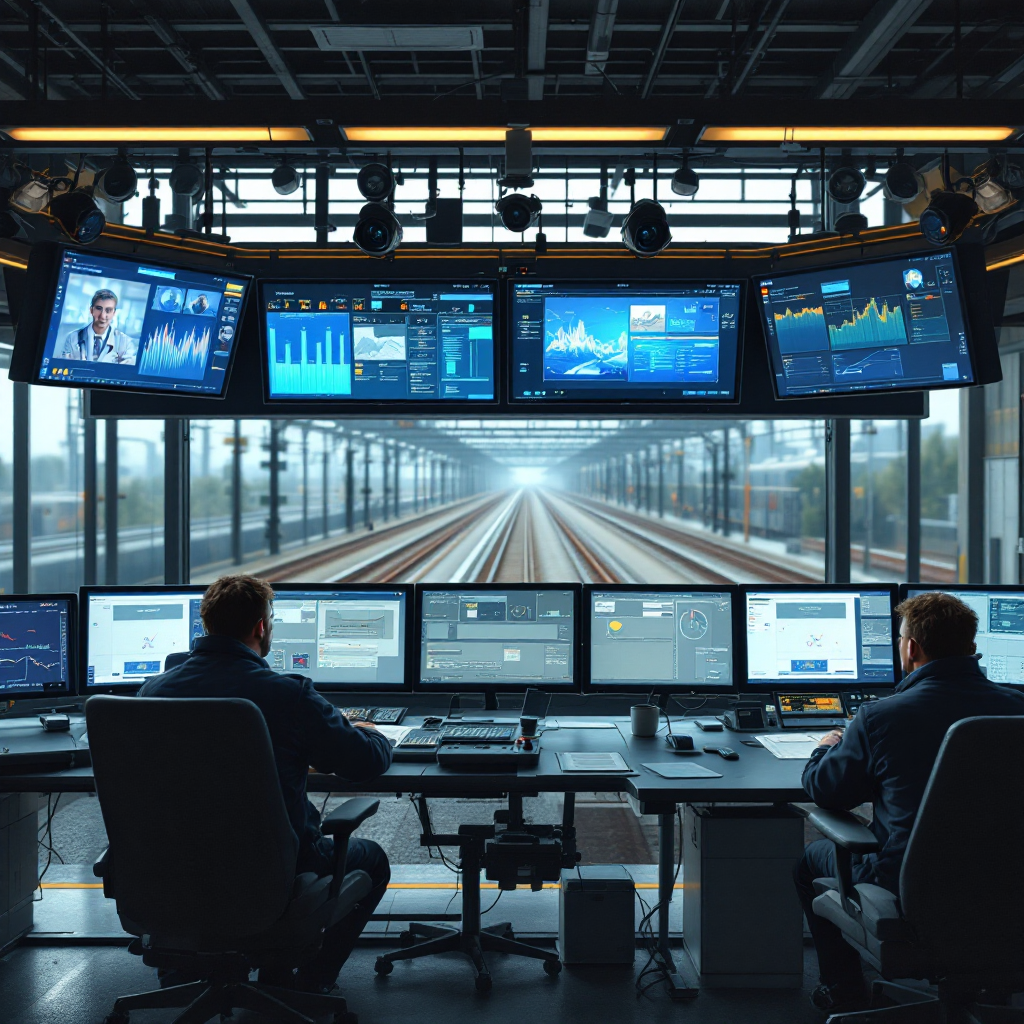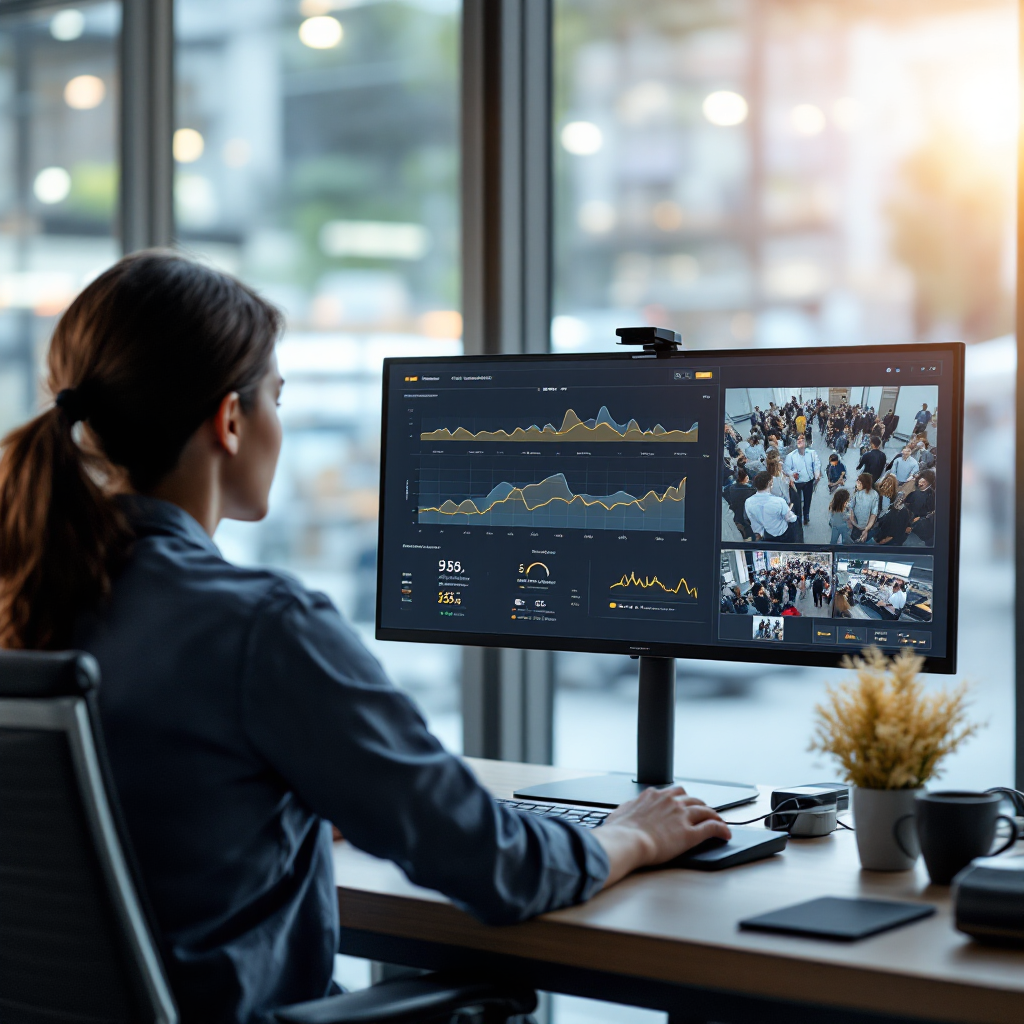milestone xprotect Open-Platform VMS for Rail
milestone XProtect serves as a powerful video management software option for rail operators who need scale and flexibility. It handles camera fleets, archives video used across sites, and ties feeds into operational dashboards. The platform runs on an open architecture. As a result, operators can mix camera brands, integrate access control, and plug in analytics from third parties. This open design matters for long, distributed rail networks that evolve over time.
Rail teams want systems that adapt. milestone XProtect lets teams connect legacy station CCTV and add modern IP cameras without a full rip-and-replace. Integrators and a reseller can extend capabilities quickly. For example, an urban station can retain its existing cameras and stream events to a central control room while adding new analytics at platform level. That reduces upfront cost and cuts deployment pain.
Open systems also allow deeper integrations. Operators can send XProtect alarms to signalling systems, to building management, and to incident-response dashboards. Visionplatform.ai works in this context by turning cameras into sensors that publish MQTT events so operations teams can act, and so supervisors can monitor KPIs across stations. This approach helps to discover inefficiencies in cargo movement, and to improve wait times in line at busy ticket halls. For practical deployment guidance, rail teams can review platform crowd management strategies at our platform crowd management page for more detail (see platform crowd management with cameras).
Using a common VMS also simplifies compliance and reporting. milestone systems provide features for audit trails, role-based access, and secure logging. Operators can combine those controls with local AI processing to keep sensitive video data on-site. This keeps EU privacy concerns manageable, and it supports responsible AI development when teams train models on local datasets. The result is a VMS that scales from single stations to regional control centres while enabling mixed-device, mixed-vendor ecosystems.
ai video analytics platform and Real-Time detection
AI adds crucial capabilities to station security and operations. When integrated with XProtect, AI analytics provide object detection, people counting, and behavioural alerts. These features turn passive camera footage into real-time operational signals. For example, object detection can flag left luggage and rapid alerts help staff respond faster. Research shows AI-enhanced VMS reduces review time significantly and that helps security teams focus on incidents rather than manual search reduce video review times by up to 70%.
Real-time detection matters on platforms and along tracks. Smart detectors can identify crowding, loitering, and perimeter breaches so teams react to confrontations before they escalate. A practical metric comes from third-party integrations: some AI plugins can process feeds from up to 60 cameras per server, which supports large stations and yard areas up to 60 cameras per server. Low latency gives control rooms actionable alerts and reduces response times. In short, the system shifts teams from passive review to proactive intervention.
Key analytics modules include crowd analysis, object detection, and license plate recognition. These modules produce metadata that XProtect indexes for fast forensic search. Operators also gain structured events for operational workflows. Visionplatform.ai supports on-prem AI model training so analytics adapt to a site’s unique scenes and classes. This helps to reduce false alarms and to improve accuracy across conditions. Also, analytics artificial intelligence can integrate with perimeter protection systems and with access control to protect critical infrastructure.

AI vision within minutes?
With our no-code platform you can just focus on your data, we’ll do the rest
video analytics for Smart Cities Traffic Management and Licence Plate Recognition
Rail hubs sit at the intersection of transport modes and city systems. In smart cities, rail stations form multimodal hubs where rail, buses, bikes, and cars interact. Video analytics provide the visibility needed to manage those flows. At level crossings and station entrances, vehicle detection and traffic monitoring can reduce delays and improve safety. Analytics reporting can also feed traffic management dashboards that coordinate lights and barriers.
License plate recognition supports access control for service yards, staff parking, and fleet management. Integrating license plate recognition with XProtect and operations systems lets teams enforce restricted access and track service vehicles. This approach also helps customers who need to find their vehicles and assists people in finding their vehicles in large lots. For rail operators looking for use-case specifics, our AI video analytics for train stations page outlines crowd and flow scenarios and queue analytics for ticket halls (see AI video analytics for train stations and ticket hall queue analytics via CCTV).
Urban rail benefits from video technology that bridges rail and city surveillance. Cameras at station perimeters and crossings can spot vehicles and pedestrians and alert control rooms in real-time. That supports safer crossings and faster incident handling. In parallel, analytics can improve wait times and help to prevent multiple people from entering a door on a single access badge, which strengthens access control. These systems also collect video data for trend analysis and for evidence after incidents, and they tie into wider city surveillance strategies when permitted by local rules.
facial recognition and analytics including Behaviour Analysis
Facial recognition can support passenger safety and staff identification when used responsibly. Within milestone deployments, facial recognition may help locate missing persons, to verify staff credentials in restricted areas, and to accelerate boarding in certain environments. Operators must balance effectiveness with privacy. For EU deployments, teams combine on-prem processing and clear retention policies to meet GDPR rules. Also, operators should document model provenance and use-case justification to align with responsible AI development.
Analytics including loitering detection and perimeter breach alarms give control rooms situational awareness to response teams. Timely alerts allow staff to react to confrontations and to prevent vandalism. Systems can also trigger workflows that direct staff to respond to medical emergencies as quickly as possible. For example, when a camera sees smoke or a fire signature, the system can escalate and summon help so teams respond to medical emergencies and evacuate areas safely.
Operators need transparent policies and careful ai model training to reduce bias and false matches. Visionplatform.ai helps by keeping training and model updates local so teams retain control over datasets and logs. That supports auditability and lets teams tune models to site-specific conditions. Finally, facial recognition features should be paired with other sensors and access control to avoid over-reliance on a single signal. When used with care, facial recognition and behaviour analysis enhance both safety and operations across public transport hubs.

AI vision within minutes?
With our no-code platform you can just focus on your data, we’ll do the rest
language versions available and airport Security Use Cases
Large rail operators serve international passengers and need multilingual interfaces. Language versions available in many VMS packages simplify operator training and reduce misinterpretation during incidents. XProtect deployments often run sites where operators speak multiple languages. That makes consistent incident handling easier and improves cross-border collaboration. Our integration experience covers multilingual setups and operational playbooks used from airports and adapted for rail.
Airport security offers lessons that rail can apply. Airports share many traits with major stations: high passenger volumes, mixed-mode transport, and strict regulatory demands. Airports use advanced queue analytics and baggage hall occupancy tools to manage flows. Rail can borrow these practices to improve station throughput and to provide a personalized customer experience. For a technical reference, see our work on airport queue analytics and on Milestone integration with airport CCTV (see airport security queue analytics with cameras and milestone xprotect integration for airport CCTV).
Shared analytics transfer well. For instance, runway-style perimeter monitoring maps to trackside intrusion detection on rail. Airport workflows also stress backup communications and layered sensors. Rail operators can adopt similar redundancy to keep control centres resilient. Finally, cross-domain integration supports unified incident response, and it helps to gather evidence for criminal investigations so law enforcement can act with clear footage and timestamps.
milestone, ai and xprotect: Scalability, Compliance and Future Trends
Scalability remains a core requirement for rail systems. milestone xprotect scales from single-site management to multi-centre deployments. Operators can centralise policies and decentralise processing. That means critical alerts run fast near the camera while archives and search functions remain central. This hybrid model supports compliance with EU rules and offers operational resilience for critical infrastructure.
Regulation influences deployment design. For EU rail networks, teams must consider GDPR and EU AI Act implications. On-prem processing and auditable logs reduce data export risks. Visionplatform.ai emphasises model ownership and in-house ai model training so operators keep control of datasets and can show compliant workflows. This approach helps with audits and supports responsible ai development for public services.
Looking ahead, AI will expand beyond detection into prediction. Predictive maintenance, for example, can use continuous video data to spot wear on equipment and to discover inefficiencies in cargo movement. Video analytics will also integrate with SCADA and BMS so cameras act as a camera into a smart sensor layer that supports asset health monitoring. Meanwhile, new ai-powered analytics will include improved gun detection, smoke detection gun detection, and richer behavioural scoring that helps teams reduce employee theft and reduce property damage. Operators who plan for modular integrations, vendor-neutral APIs, and clear governance will keep pace with these trends and will leverage milestone video as a core input to safer, more efficient rail services.
FAQ
What is milestone xprotect and why should rail operators consider it?
milestone xprotect is a video management software platform that supports large camera deployments and third-party integrations. Rail operators should consider it because its open architecture allows mixed-device integration and scalable control for multi-station networks.
How does AI improve station safety?
AI turns continuous video streams into structured alerts and searchable metadata. It enables faster detection of events such as loitering, perimeter breaches, and crowding so response teams act sooner and more effectively.
Can license plate recognition work in rail environments?
Yes. License plate recognition helps manage staff yards, enforce restricted access, and track fleet vehicles. Integrations with XProtect and operations systems enable automated gates and logging for compliance.
How do privacy rules affect facial recognition use?
Privacy laws require clear purpose, limited retention, and accountable processing. Operators often keep processing on-prem and implement strict access controls so facial recognition aligns with GDPR principles.
What is the role of multilingual interfaces for operators?
Language versions available in VMS reduce errors and speed training for international teams. They also help maintain consistent incident responses across control rooms that serve diverse populations.
How scalable is a combined VMS and AI solution?
Very scalable. milestone xprotect supports centralised management and distributed processing so operators can scale from a single station to national networks without replacing the entire stack.
Can airport security practices apply to rail terminals?
Yes. Airports use advanced queue analytics and perimeter monitoring that rail can adapt to manage passenger flows, baggage areas, and station perimeters. Shared tools improve throughput and security across domains.
What deployment options help with EU compliance?
On-prem processing, local model training, and auditable logs help meet EU requirements. Keeping video data and models inside operator control reduces legal risks and supports responsible AI practices.
How does AI assist with maintenance and operations?
AI can detect wear and abnormal patterns in equipment, which enables predictive maintenance and reduces downtime. It also provides metrics that help improve wait times and to discover inefficiencies in cargo movement.
Where can I learn more about train station analytics and crowd management?
Explore our resources on AI video analytics for train stations and platform crowd management with cameras for practical examples and deployment guidance. These pages contain use cases and technical details tailored to rail operators.

